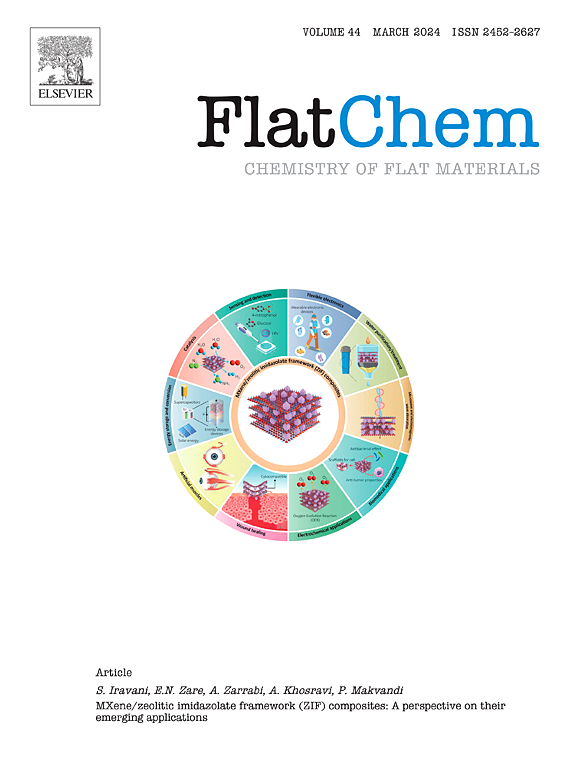Bi2WO6-Fe3O4/rGO在可见光下催化去除罗丹明B的性能
IF 6.2
3区 材料科学
Q2 CHEMISTRY, PHYSICAL
引用次数: 0
摘要
研究了可见光下H2O2活化Bi2WO6-Fe3O4/rGO对罗丹明B降解的催化性能。通过各种技术分析了Bi2WO6-Fe3O4/rGO催化剂的性能。结果表明,最佳工艺条件为污染物16 mg L−1,纳米复合值0.8 g L−1,2.6 mM H2O2, pH 5, 40 min后对罗丹明B的去除率为96%。此外,自由基清除剂实验证实,羟基自由基(OH•)和超氧自由基(O2∙-)对污染物的降解有促进作用,其中OH•起主导作用。此外,Bi2WO6-Fe3O4/rGO具有良好的稳定性和可重用性。本研究表明,Bi2WO6-Fe3O4/rGO与H2O2同时存在对有机污染物具有很高的降解潜力。本文章由计算机程序翻译,如有差异,请以英文原文为准。

The catalytic performance of Bi2WO6-Fe3O4/rGO for the removal of rhodamine B under visible light
The aim of this work was to study the catalytic performance of Bi2WO6-Fe3O4/rGO on the rhodamine B degradation using H2O2 activation with visible light. Characteristics of the Bi2WO6-Fe3O4/rGO catalyst were analyzed via various techniques. The results displayed that the optimum conditions (16 mg L−1 pollutant, nanocomposite value 0.8 g L−1, 2.6 mM H2O2, pH 5), the elimination efficiency of rhodamine B 96 % was obtained after 40 min. Moreover, the radical scavenger experiments confirmed that hydroxyl radical (OH•) and superoxide radical (O2∙-) contributed to the pollutant degradation, and OH• has a dominant role. In addition, Bi2WO6-Fe3O4/rGO exhibited the good stability and reusability. This study illustrated that the simultaneous presence of Bi2WO6-Fe3O4/rGO with H2O2 has a high potential for the degradation of organic pollutant.
求助全文
通过发布文献求助,成功后即可免费获取论文全文。
去求助
来源期刊

FlatChem
Multiple-
CiteScore
8.40
自引率
6.50%
发文量
104
审稿时长
26 days
期刊介绍:
FlatChem - Chemistry of Flat Materials, a new voice in the community, publishes original and significant, cutting-edge research related to the chemistry of graphene and related 2D & layered materials. The overall aim of the journal is to combine the chemistry and applications of these materials, where the submission of communications, full papers, and concepts should contain chemistry in a materials context, which can be both experimental and/or theoretical. In addition to original research articles, FlatChem also offers reviews, minireviews, highlights and perspectives on the future of this research area with the scientific leaders in fields related to Flat Materials. Topics of interest include, but are not limited to, the following: -Design, synthesis, applications and investigation of graphene, graphene related materials and other 2D & layered materials (for example Silicene, Germanene, Phosphorene, MXenes, Boron nitride, Transition metal dichalcogenides) -Characterization of these materials using all forms of spectroscopy and microscopy techniques -Chemical modification or functionalization and dispersion of these materials, as well as interactions with other materials -Exploring the surface chemistry of these materials for applications in: Sensors or detectors in electrochemical/Lab on a Chip devices, Composite materials, Membranes, Environment technology, Catalysis for energy storage and conversion (for example fuel cells, supercapacitors, batteries, hydrogen storage), Biomedical technology (drug delivery, biosensing, bioimaging)
 求助内容:
求助内容: 应助结果提醒方式:
应助结果提醒方式:


